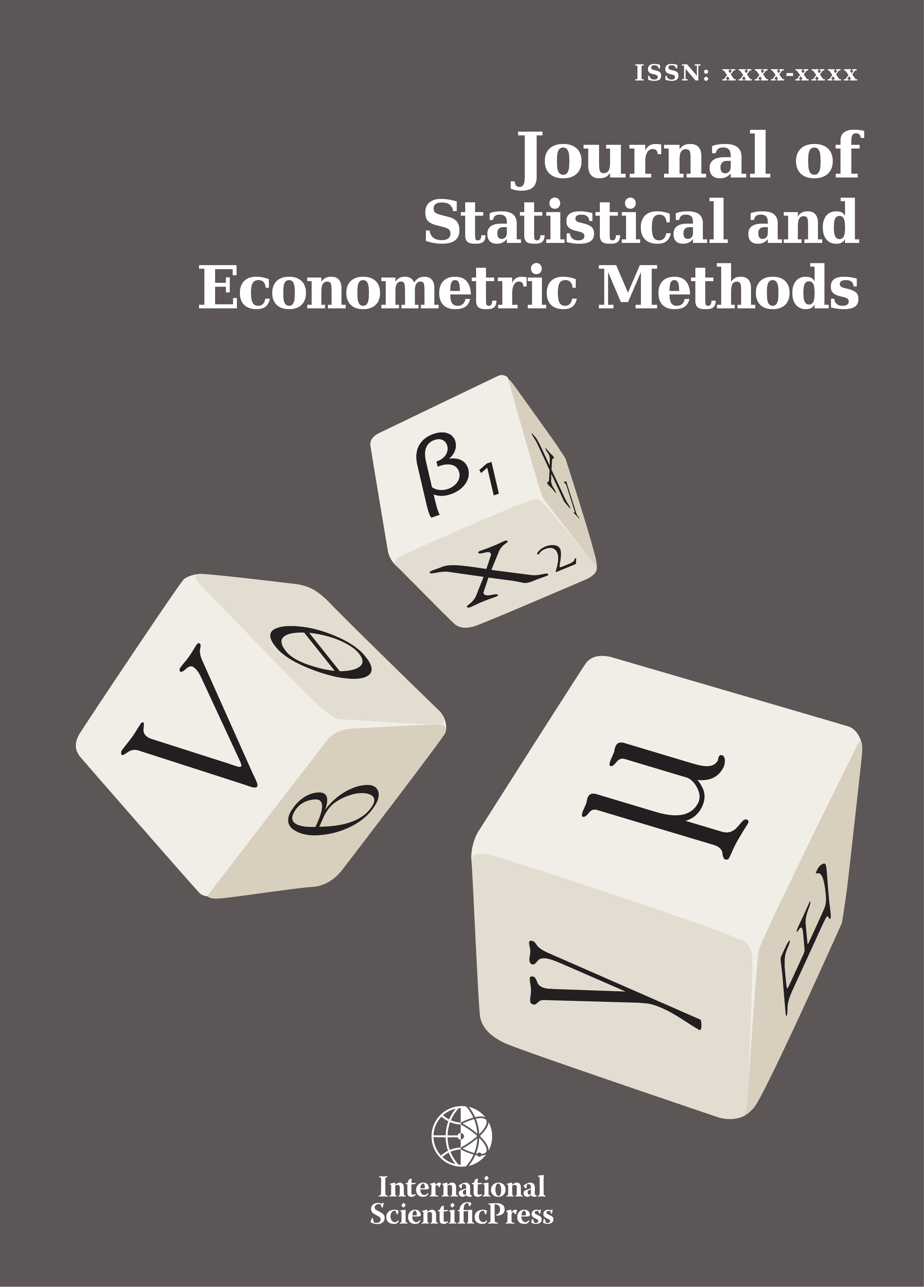Journal of Statistical and Econometric Methods
Resource Use Efficiency among Fadama Crop Farmers in Ibadan/Ibarapa Agricultural Zone of Oyo State, Nigeria: A Stochastic Frontier Approach
-
 [ Download ]
[ Download ]
- Times downloaded: 12140
Abstract
The study investigated the resource use efficiency among Fadama crop soko (Celosia argentea), watermelon (Critullus lanatus), and maize (zea mays) farmers in Ibadan/Ibarapa agricultural zone of Oyo state, Nigeria. Data were collected from 120 respondents who were randomly selected and interviewed using both interview schedule and questionnaire. Data collected were analyzed using stochastic frontier model. The findings revealed that sigma square (ä2) was 0.91397, and 0.678018 for soko and watermelon farmers, respectively, and were all significant at ñ ˂ 0.05, while gamma for the three crops, soko, watermelon and maize were 0.985, 0.642 and 0.854, respectively, and significant at ñ ˂ 0.05. Labour, fertilizer, insecticides and seeds influenced the technical efficiency of soko, while herbicides and insecticides influenced the technical efficiency of watermelon and labour, insecticides and seed influenced the technical efficiency of maize farmers. Age, educational levels and farming experience had significant effect on the level of technical inefficiency. The p values for soko, watermelon and maize were 0.694, 0.0261 and 0.0000, respectively. There was no significant difference in the productivity between Fadama and non Fadama (soko) farmers, while there was a significant difference between the productivity of Fadama and non Fadama (watermelon) farmers as well as Fadama and non fadama maize farmers.
